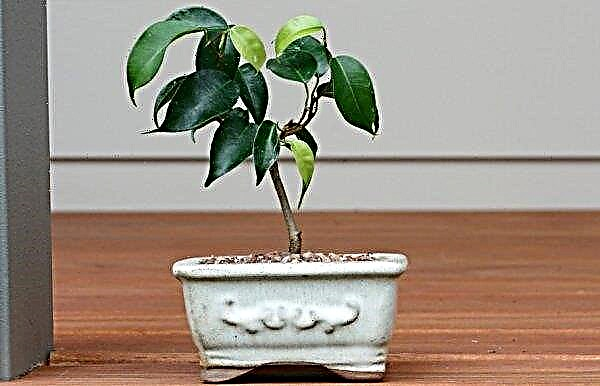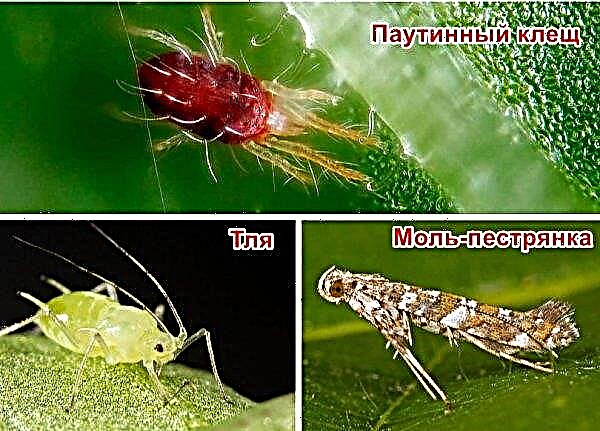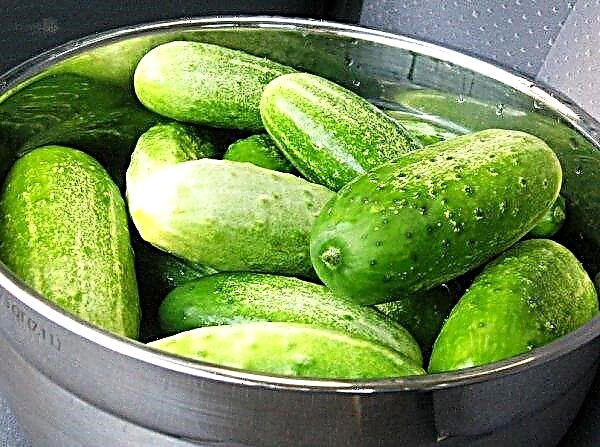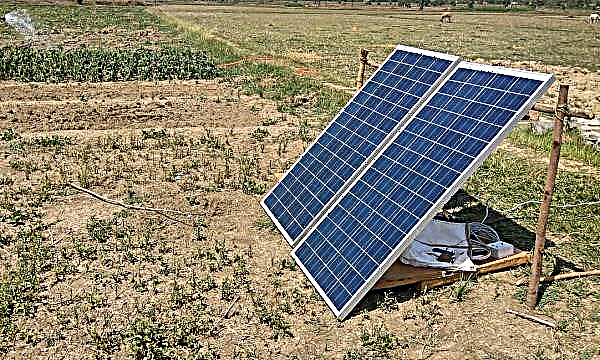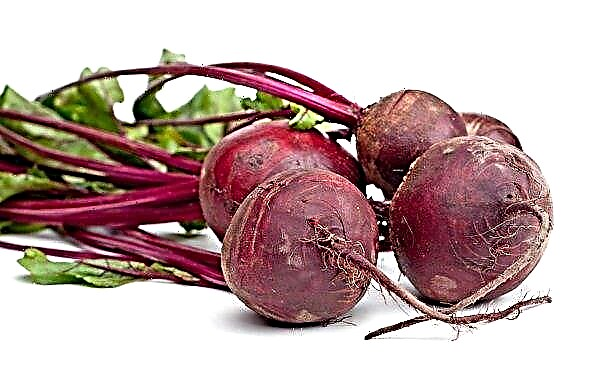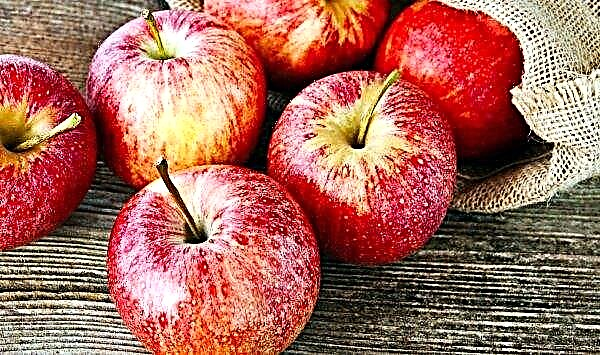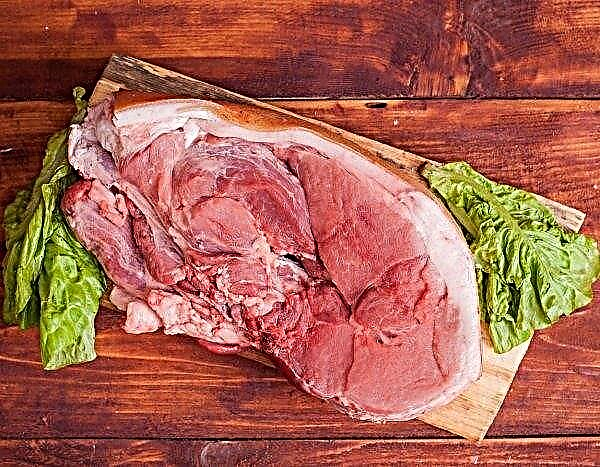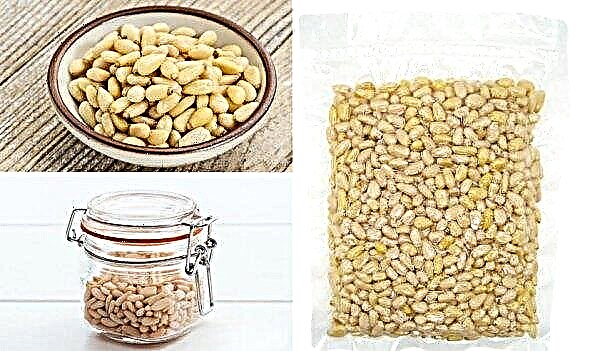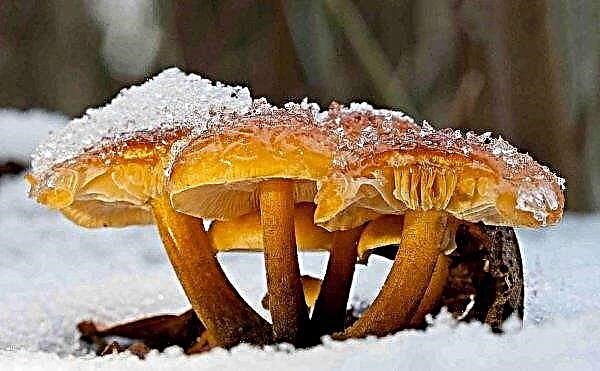Green bottle gooseberries are very common in the middle lane. Many gardeners, not only in Russia but throughout Europe, cultivate crops in their areas. If you also decide to grow this variety, you will benefit from the planting and care information below.
Selection history
Reliably about the originators of the variety is not known. It is believed that this is an old European variety. Perhaps Green Bottle is a varietal group with almost identical characteristics. This assumption is expressed by Pavlova M. A., author of the agricultural manual “Berry crops”, published in Moscow in 1959.

Description
Gooseberry Green Bottle - a semi-sprawling shrub of high growth power. The branches at the roots are powerful, medium in thickness. The upper parts of the shoots hang slightly. There are thorns on the stems. Branches are medium-leaved. The leaf plates are large, hollow, dark green in color. Before deciduous leaves turn brown.
The plant blooms in large buds with light yellow petals. According to the result of flowering berries are tied. The average weight of one instance is 16 g. The shape of the fruit is oblong, the peel is of a characteristic green color. The pulp is also green. The taste of the fruit is sweetish, with acidity and a fragrant finish.

Advantages and disadvantages
- The Green Bottle variety has many advantages:
- large fruits;
- high taste;
- high resistance to frost;
- excellent drought tolerance;
- high productivity.
- The variety has three significant disadvantages:
- at high humidity, the fruits crack;
- in dry, hot weather, the berries crumble;
- stalks, leaves, and fruits are often affected by powdery mildew.
Drought resistance, frost resistance
Resistance to drought is high. The bushes survive and bear fruit in the heat, but yields suffer - without moisture, the berries fall from the branches until they ripen. The frost resistance of the variety is also noteworthy - up to -25 ° C. The plant will survive without shelter and at -35 ° C if winter is snowy and windless.
Productivity and fruiting
Green bottle gooseberries are appreciated for their high yield - up to 20 kg of berries are removed from the bush during the growing season. Fruiting is annual. Ripening periods are medium: technically, the fruits ripen by mid-July, and full maturity occurs in early August.

Landing
When planting, it is important to observe all the nuances - these include the choice of terms, terrain and seedlings. Planting material must be properly prepared. We must not forget about the landing technology.
The timing
Gooseberries can be planted in spring or autumn.
Depending on the season, planting dates are as follows:
- in spring - at the moment when the snow has melted, but the sap flow has not begun;
- in the fall - a month before the frost.
Agronomists recommend autumn planting - in this case, the plants take root better. In addition, in the spring it is not always possible to catch the right moment.
Did you know? Gooseberries are called gooseberry in English - goose berry.
Choosing the right place
For planting, you must select a site open to sunlight. The optimum height of the groundwater is not higher than 1.5 m to the ground.
The soil should meet the following characteristics:
- loam, sandstone, clay or sandy soil;
- pH 6.0;
- lack of waterlogging.
Selection and preparation of planting material
For better survival, you need to choose a quality seedling.

Planting material must meet the following requirements:
- age 1-2 years;
- 2-3 branches up to 0.4 m long;
- root system with at least 3 skeletal branches and developed fibrous roots.
Inspect the seedling before planting. If necessary, trim dry roots. Shorten the shoots so that up to 5 buds remain on each branch. To stimulate root formation, you can treat the root system with “Kornevin” - for this, 1 g of the concentrate is diluted in 1 l of water. 350 ml of the product is used on the bush.
Landing pattern
Seedlings are placed according to the scheme of 2 m between the bushes.
Important! If the roots were treated with “Kornevin”, after 2-3 weeks after planting, pour 350 g of the bush in the same way as the prepared solution of this preparation.
The landing technology is as follows:
- Dig a hole 0.5m wide and deep.
- Mix 10 kg of compost, 50 g of double superphosphate, 100 g of ash and 40 g of potassium sulphide.
- Pour the resulting nutrient mixture into a pit and tamp.
- Place the seedling in the hole at a slight angle.
- Fill the empty space in the pit with soil.
 After planting, compact the soil in the tree-trunk circle. Pour a seedling of 10 liters of water and mulch with sawdust.
After planting, compact the soil in the tree-trunk circle. Pour a seedling of 10 liters of water and mulch with sawdust.
Features of seasonal care
Shrub growth and ripening largely depend on the planting, but do not forget about regular care. Without it, the normal development of the plant is impossible. Plantings must be weeded, watered, loosened, fertilized and processed from diseases and pests. The crown also needs care - the construction of the support and pruning will not only help to form a bush, but also improve the quality of the crop.
Soil care
For active growth and fruiting, it is important to care for the soil. Care measures include watering and cultivating. Bushes are watered as needed. Watering is carried out when the soil dries to a state of dust.
 For one watering, 30–40 liters of water are poured under the bush. Soil should be saturated with moisture at 40 cm.
For one watering, 30–40 liters of water are poured under the bush. Soil should be saturated with moisture at 40 cm.
It is especially important to irrigate the soil:
- at the time of fruit setting in late May - early June;
- during the period of active fruiting;
- in late September - early October in preparation for wintering.
After each moistening or rain, the soil must be loosened. The optimal depth of cultivation in the near-stem circle is up to 7 cm. Heavy clay soils are dug up with a shovel. Sandy substrate fluff with a pitchfork or rake. It is also important to remove weeds in a timely manner.
Weeding is convenient at the time of loosening. Then, to preserve moisture, it is desirable to mulch the trunk circle. As a mulch, gardeners recommend using compost or peat.
Preventative treatment
Gooseberries can infect diseases and pests. For prevention, sometimes correct agricultural techniques are not enough, so it is better to carry out early processing of bushes and soil.

From wintering pests, the drug "Profilactin" is used. Spraying is carried out before the start of the growing season. To prepare the working solution, mix 500 ml of the concentrate in a bucket of water. 1.5 liters of the drug is enough to process one bush. For the effective destruction of parasites, one treatment is enough.
From fungal infections, gardeners recommend pouring boiling water over the bushes. Processing is also carried out at the beginning of the growing season, in melting snow. To destroy the spores, you must carefully shed all the branches of the plant.
Important! During the treatment period, the temperature should not be lower than + 4 ° С.
Top dressing
Agronomists offer several different feeding schemes. They largely depend on the type of soil.
The standard scheme is as follows:
- after flowering;
- after harvesting.

At each replenishment under the bush, a mixture of 10 kg of compost, 80 g of superphosphate, 40 g of ammonium nitrate and 20 g of potassium chloride is added.
Such a fertilizer scheme per bush is also possible:
| at the beginning of the growing season | 45 g of urea |
| in May | bucket of liquid chicken droppings |
| in summer | 3 top dressing 1 time per month from a solution of 3 kg of manure and 200 g of ash in 10 liters of water |
| autumn after harvest | up to 80 g of potassium sulfate |
Support
Green Bottle variety is characterized by a powerful growth of shoots, so it is advisable to use bush holders to maintain the shape of the crown. The support has the form of a circle on the legs, which covers the bush. The finished device can be bought or made independently from pipes.

Pruning
The first 3 years after planting spend forming pruning. The procedure is carried out in early spring before the start of sap flow. The formation consists of creating a skeletal skeleton: annually all branches are shortened to 5 buds, and root shoots are removed, leaving only 3-4 of the strongest stems.

Thus, by year 4, the bush will consist of 19-20 branches of different ages. In the spring before the start of the growing season and in the fall after its completion, sanitary pruning is carried out.
In its process, shoots are removed:
- age from 5 years;
- growing inward;
- thickening the crown;
- sick;
- broken.

In summer, before the formation of the ovaries on the fruiting bushes, you can pinch young green branches, leaving 5-7 leaves. Such a measure will help improve yield, as it stimulates the setting of large fruits.
Harvesting and storage
The fruits of the Green Bottle Gooseberry may crumble, so they need to be picked as they ripen. Some gardeners suggest technically ripe berries to be removed to leave the fall, and leave them to ripen. The shelf life of fully ripe fruits is 10 days in the refrigerator. The optimum storage temperature is + 5 ° C.
Did you know? For the unusual golden color, gooseberry jam in the old days was called "royal".
Winter preparations
Preparing for the winter consists of the following measures:
- soil cleaning;
- sanitary pruning;
- water-loading irrigation (40 l of water under the bush);
- mulching the trunk circle with compost or peat.

In frosts not lower than -25 ° C, the bush can not be covered. In the northern regions or in areas with severe winters, the bush is wrapped with spanbond.
Breeding methods
The most effective method of propagation of the bush is layering. In spring, a branch with buds is bent to the ground, pinned with staples and sprinkled with soil, leaving the apex above the surface of the earth. Dug layers are regularly watered. In autumn, when a branch takes root, a new plant is separated from the mother bush and transplanted to a permanent place.

Diseases and Pests
The Green Bottle variety has a low immunity to diseases and pests. The gardener needs to be alert to deal with the problem in a timely manner. Of the diseases for bushes, American powdery mildew is dangerous.

Immediately after identifying the first symptoms during the growing season, treat the plant with Tiovit Jet fungicide. To do this, 25 g of concentrate should be stirred in a bucket of water. 10 l of working solution is enough to process 100 m² of plantings. The result is visible already a day after application. Up to 6 treatments are allowed depending on the severity of the lesion.
Parasites can also infect gooseberries.
The most common:
The drug "Fufanon-Nova" will help in the elimination of all these pests. 13 ml of concentrated product is stirred in 10 l of water. Spraying is carried out during the growing season. The consumption rate is 1–1.5 liters per bush. For treatment of bushes, 2 treatments are required with an interval of 20 days.
The Green Bottle Gooseberry variety has many advantages, and the main advantage of the culture is the taste of berries. A large crop of aromatic fruits is definitely worth the effort to grow shrubs. And the plant's resistance to frost and drought will help in this.
For an amateur. there is a gooseberry taste, pleasant with sourness. But next grow Krasnoslavyanskiy (this one even seemed overshooted in season-18), English yellow (the leader of taste among mine, beautiful amber color), Black Sea (its pleasant sweet-sour taste, it emits lilac fog in full maturity). The latter two have thin skin + high aesthetics of appearance - they are eaten especially nicely. And the Green Bottle peel is rougher. The taste of Zel Booth is not bad, but you can’t eat a lot. (I’m talking to myself, the granddaughters eat up all the gooseberries in tech maturity) I made for the Royal (tsar) emerald jam. It’s not cooked yet - it’s eaten, the family is big, and serve it to all the gooseberries. There is a grandmother in-law 96 years old. Green orders. There is shedding. Everything suits me in this grade, handsome man - that you need Lady’s fingers (outwardly). But I’m afraid I won’t cope with the torment. Grows since 2015. All gooseberries in full sun.

